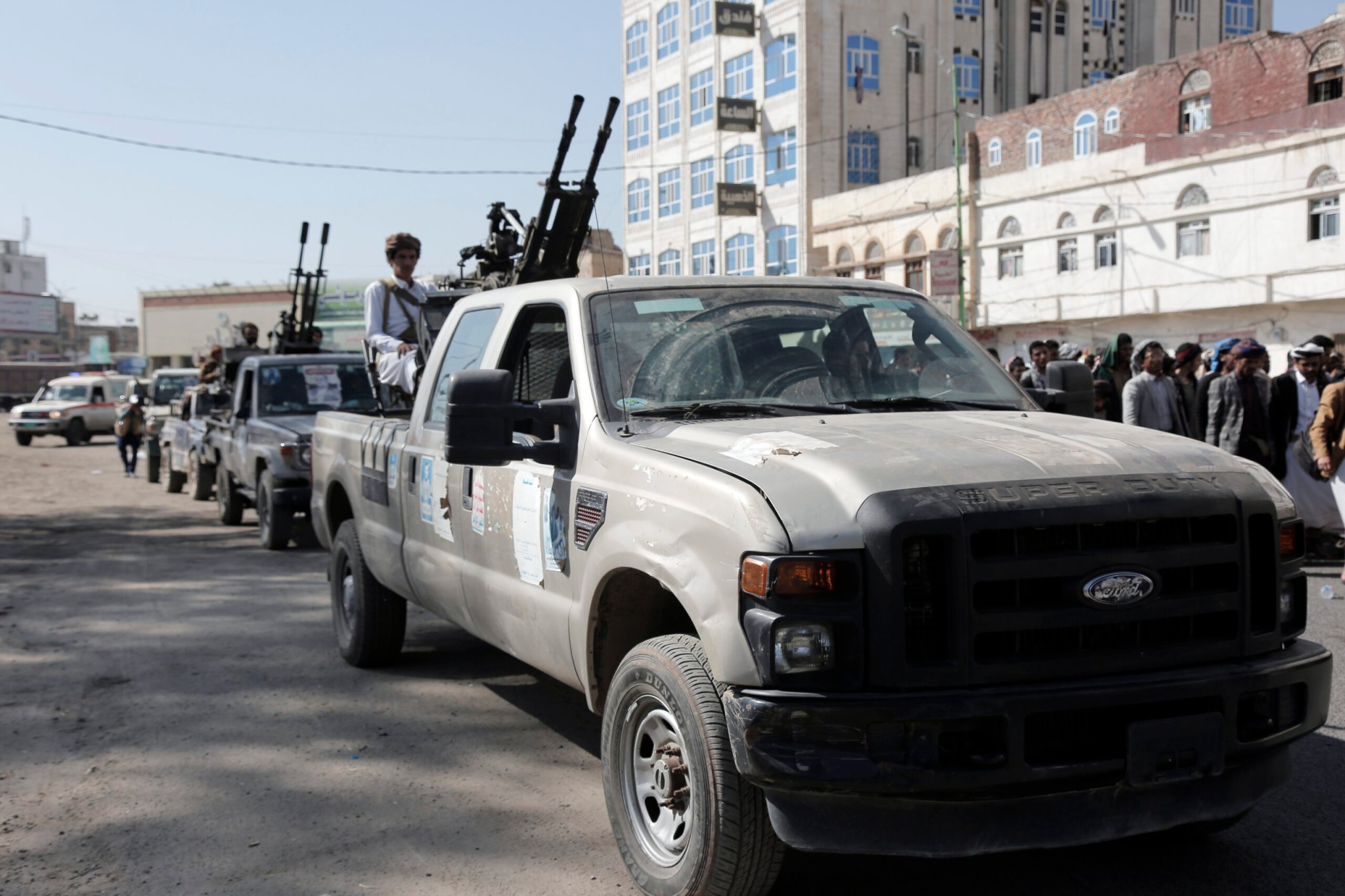

American and British forces launched a series of airstrikes on Yemen today, striking 36 targets at 13 locations including in the capital of Sana’a.
The news was first reported by Reuters and the Associated Press, citing American defense officials. It’s the latest in a series of strikes on Yemen this week, and one of the largest since the two countries bombed more than two dozen locations on Jan. 11. U.S. Central Command confirmed the strikes, done in coordination the British Armed Forces and supported by six other nations.
The strikes hit areas in the south of Sana’a, according to al-Massirah, a television channel run by the Houthi movement. The U.S. forces involved included F/A-18 fighter jets launched from the USS Dwight D. Eisenhower aircraft carriers as well as Tomahawk missiles fired by U.S. Navy vessels in the waters off of Yemen, according to al-Jazeera. The targets included missile systems, helicopters, UAV operation sites and radars, all used in Houthi attacks on commercial shipping vessels in nearby waters, CENTCOM said in a statement.
The bombings in Yemen come a day after American forces launched major airstrikes on 85 targets in Iraq and Syria. Those strikes hit what the U.S. said were militias linked to Iran’s Islamic Revolutionary Guard Corps, and done in response to a drone attack that killed three American soldiers in Jordan near the Syrian border. The Houthi movement, also supported by Iran, has been attacking ships in the Red Sea and Gulf of Aden since October. The Yemeni group says it is attempting to stop shipping traffic through the Red Sea to economically hurt Israel in response to Israel’s war in Gaza. Over the last four months the shipping industry has been economically hit, having to divert vessels to longer routes.
Subscribe to Task & Purpose Today. Get the latest military news and culture in your inbox daily.
The attacks on Sana’a come after a series of incidents earlier in the day and on Friday, Feb. 2. On Friday, U.S. forces in the Red Sea and Gulf of Aden shot down 12 Houthi UAVs. It’s unclear if the Houthis directly launched the drones on Friday in response to U.S. actions in Iraq and Syria. Earlier today CENTCOM said that it conducted “self-defense” strikes into Yemen, hitting six anti-ship missiles that it said were about to launch.
The Houthi movement controls a large portion of Yemen, including the capital and other major cities. It took over much of that area during the country’s civil war, and has held onto it despite opposition, including a long campaign led by Saudi Arabia to defeat the group.
On Wednesday, the Houthis said that American and British ships taking part in “aggression” were seen as targets. The day earlier the group’s military leader said the Houthis were prepared for a long-term conflict and are willing to maintain their disruptive attacks in the Red Sea until the Israel-Gaza war ends.
In January the U.S. and U.K. hit 60 targets across more than two dozen locations in Yemen, in the largest attack against Houthis since the back-and-forth hostilities started in October. The Jan. 11 attacks on Houthi-controlled areas were meant to deter the group and reduce its capabilities to launch munitions. However that has not stopped the attacks, as this week shows.
Update: 2/3/2024: This story has been updated with new information provided by CENTCOM’s statement.
The latest on Task & Purpose
- The Army asked soldiers to turn in excess gear. It got back 37,000 items
- Medal of Honor recipient Clint Romesha unpacks life as a tanker
- Navy SEALs who disappeared during mission off Somalia identified
- Ukrainian Bradley only had a two-person crew when it wrecked a T-90
- China is expanding its marine corps, but how capable is it?
